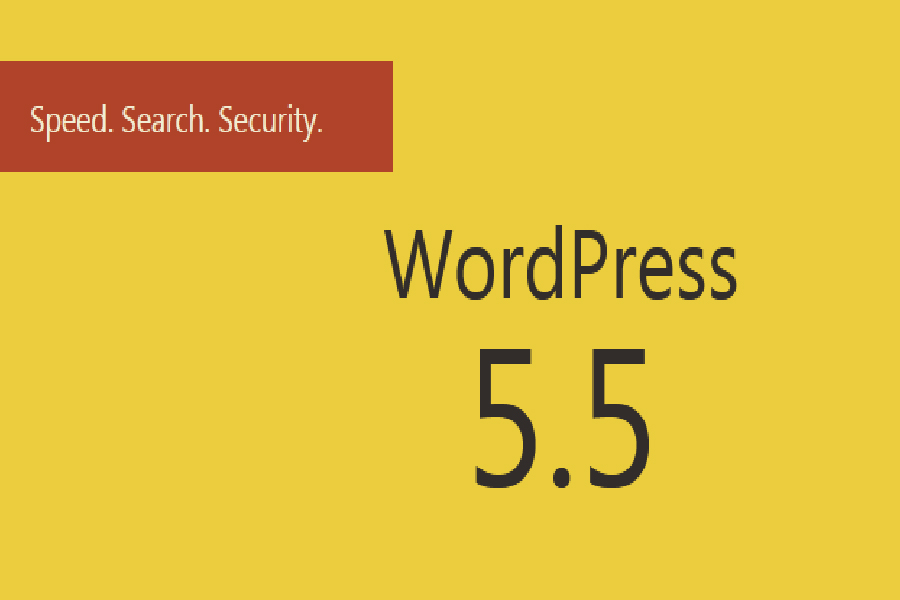Welcome to WordPress 5.5.
In WordPress 5.5, your site gets new power in three major areas: speed, search, and security.
Speed
Posts and pages feel faster, thanks to lazy-loaded images.
Images give your story a lot of impact, but they can sometimes make your site seem slow.
In WordPress 5.5, images wait to load until they’re just about to scroll into view. The technical term is ‘lazy loading.’
On mobile, lazy loading can also keep browsers from loading files meant for other devices. That can save your readers money on data — and help preserve battery life.
Search
Say hello to your new sitemap.
WordPress sites work well with search engines.
Now, by default, WordPress 5.5 includes an XML sitemap that helps search engines discover your most important pages from the very minute you go live.
So more people will find your site sooner, giving you more time to engage, retain and convert them to subscribers, customers or whatever fits your definition of success
Security
Auto-updates for Plugins and Themes
Now you can set plugins and themes to update automatically — or not! — in the WordPress admin. So you always know your site is running the latest code available.
You can also turn auto-updates on or off for each plugin or theme you have installed — all on the same screens you’ve always used.
Update by uploading ZIP files
If updating plugins and themes manually is your thing, now that’s easier too — just upload a ZIP file.
Accessibility
Every release adds improvements to the accessible publishing experience, and that remains true for WordPress 5.5.
Now you can copy links in media screens and modal dialogs with a button, instead of trying to highlight a line of text.
You can also move meta boxes with the keyboard, and edit images in WordPress with your assistive device, as it can read you the instructions in the image editor.
For developers
5.5 also brings a big box of changes just for developers.
Server-side registered blocks in the REST API
The addition of block types endpoints means that JavaScript apps (like the block editor) can retrieve definitions for any blocks registered on the server.
Dashicons
The Dashicons library has received its final update in 5.5. It adds 39 block editor icons along with 26 others.
Defining environments
WordPress now has a standardized way to define a site’s environment type (staging, production, etc). Retrieve that type with wp_get_environment_type() and execute only the appropriate code.
Passing data to template files
The template loading functions (get_header(), get_template_part(), etc.) have a new $args argument. So now you can pass an entire array’s worth of data to those templates.
More changes for developers
- The PHPMailer library just got a major update, going from version 5.2.27 to 6.1.6.
- Now get more fine-grained control of
redirect_guess_404_permalink(). - Sites that use PHP’s OPcache will see more reliable cache invalidation, thanks to the new
wp_opcache_invalidate()function during updates (including to plugins and themes). - Custom post types associated with the category taxonomy can now opt-in to supporting the default term.
- Default terms can now be specified for custom taxonomies in
register_taxonomy(). - The REST API now officially supports specifying default metadata values through
register_meta(). - You will find updated versions of these bundled libraries: SimplePie, Twemoji, Masonry, imagesLoaded, getID3, Moment.js, and clipboard.js.
Check the Field Guide for more!
There’s a lot more for developers to love in WordPress 5.5. To discover more and learn how to make these changes shine on your sites, themes, plugins and more, check the WordPress 5.5 Field Guide.
Highlights from the block editor
Once again, the latest WordPress release packs a long list of exciting new features for the block editor. For example:
Video: In the editor, the block inserter shows two tabs, Blocks and Patterns. The Patterns tab is selected. There are different block layouts in this tab. After scrolling through options including buttons and columns, a pattern called “Large header with a heading” is chosen. This adds a cover block, which is customized with a photo and the name of the WordPress 5.5 jazz musician.
Video: An image is added with an image block. In the block toolbar, an icon called “Crop” is selected, which changes the toolbar to show image resizing tools. First, zoom is used to zoom into the center of the image. Next, aspect ratio is clicked. This shows a dropdown of common aspect ratios. Square is chosen, and the image is moved within the new square outline. The crop is completed by clicking “Apply.”
Block patterns
New block patterns make it simple and fun to create complex, beautiful layouts, using combinations of text and media that you can mix and match to fit your story.
You will also find block patterns in a wide variety of plugins and themes, with more added all the time. Pick any of them from a single place — just click and go!
Inline image editing
Now it’s easier than ever to find the block you need. The new block directory is built right into the block editor, so you can install new block types to your site without ever leaving the editor.
And so much more.
The highlights above are a tiny fraction of the new block editor features you’ve just installed. Open the block editor and enjoy!
